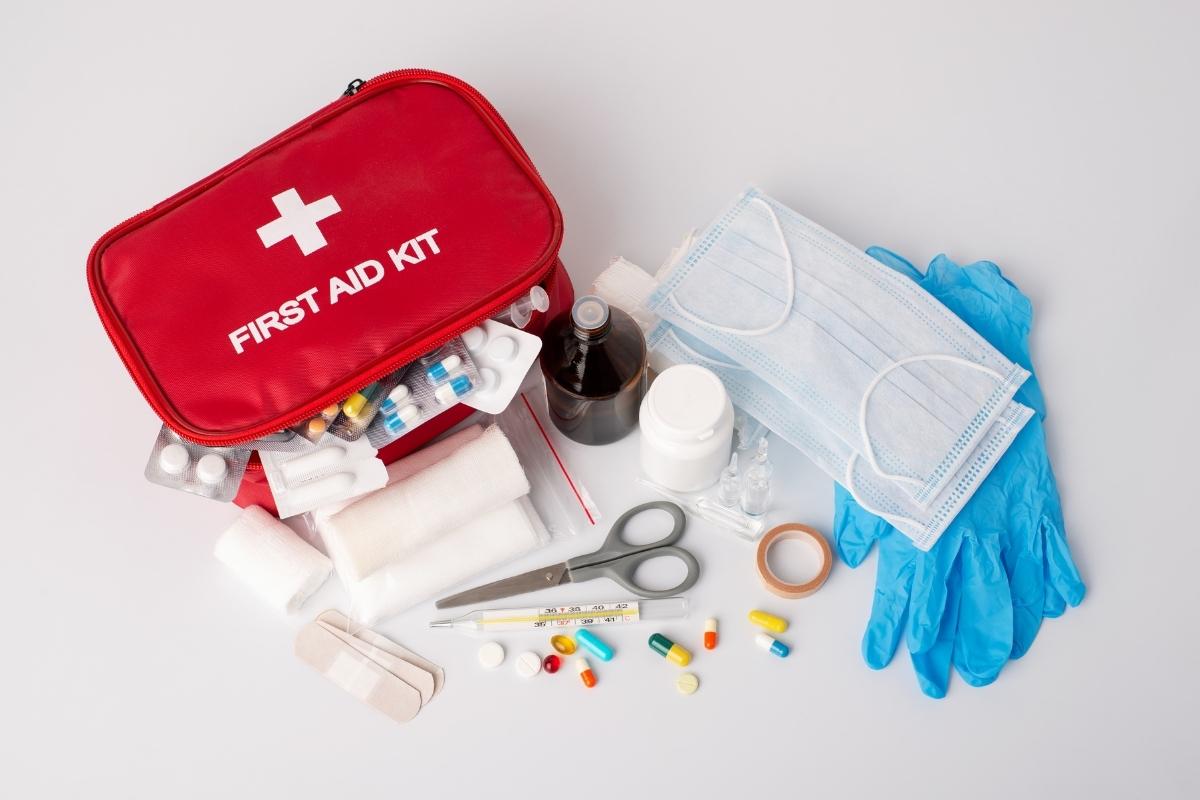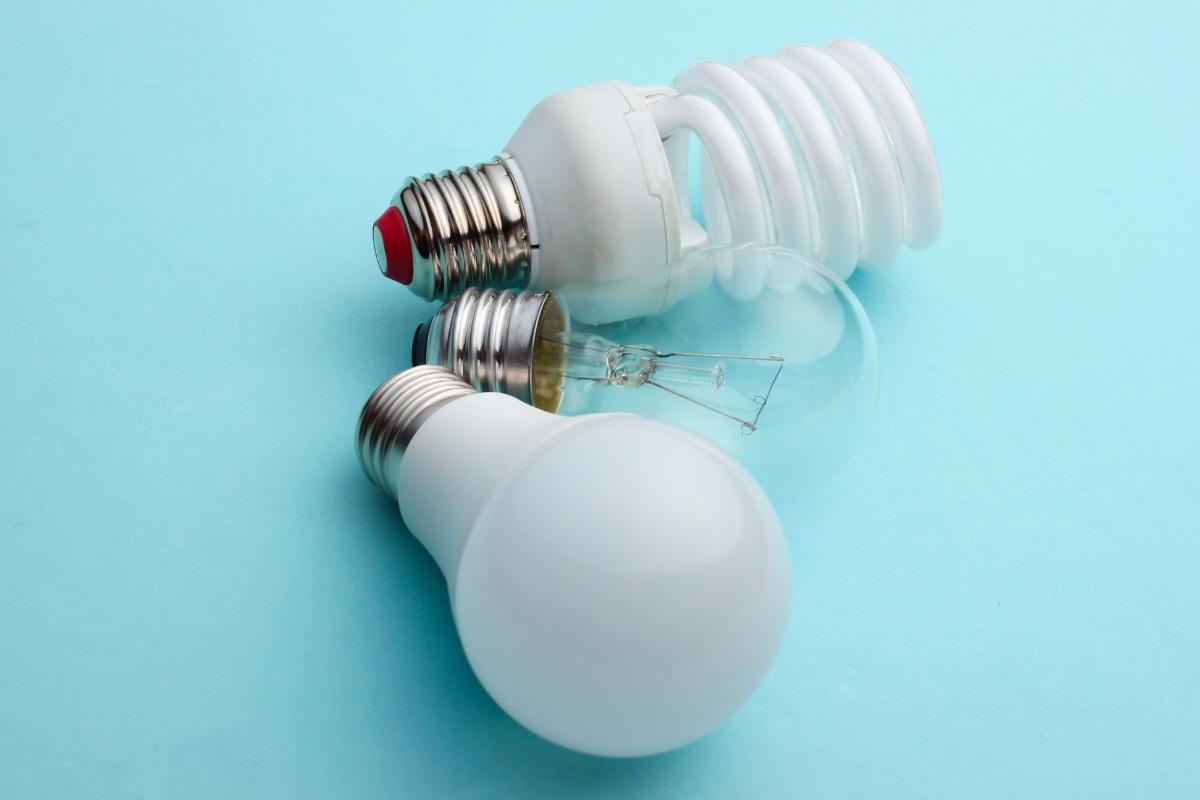People take owning first aid kits for granted. These kits are so affordable and readily available in stores or pharmacies that many people find it easy to buy and keep these kits in their homes or workplaces. However, as commonplace as first aid kits are today, they once were a rarity and reserved primarily for people who worked dangerous jobs. Moreover, before these kits were invented, people often used folk remedies to treat their own illnesses and injuries. It was common for people to grow herbs to treat illnesses like coughs or colds, for example. They also would treat injuries like burns or cuts by using whiskey as a cleansing agent or butter as a salve.
However, in 1888 the pharmaceutical company Johnson & Johnson invented a kit that railroad workers could use to treat injuries or illnesses that they suffered while working. These first kits contained gauze and aspirin that would temporarily stop bleeding or relieve pain until the person could be seen by a doctor. These rudimentary kits proved to be so effective that Johnson & Johnson went on to create the first aid kits that people know and use today. These kits contain a host of items like bandages, gauze, medical tape, rubbing alcohol pads, cortisone cream, and other supplies that prove helpful in treating minor injuries like burns, shallow cuts, or insect bites.
Because they do allow people to address minor medical issues thoroughly and promptly, first aid kits are now considered to be an essential component of any family’s safety plans. Organizations like the Red Cross urge people to keep first aid kits on hand in their homes. These kits can be vital in helping people avoid more severe pain or injuries before they can be treated by a doctor.
What Should Be in a First Aid Kit
While people can buy first aid kits from big-box stores like Walmart or pharmacies like Walgreens, they may prefer to make up their own. When they create their own first aid kits, it is important for these people to learn what items should be included so that they can keep their families and themselves safe. The Red Cross suggests a number of different items to be put inside the typical first aid kit.
The Red Cross recommends that all first aid kits for a family of four include the following:
- 2 absorbent compress dressings (5 x 9 inches)
- 25 adhesive bandages (assorted sizes)
- 1 adhesive cloth tape (10 yards x 1 inch)
- 5 antibiotic ointment packets (approximately 1 gram)
- 5 antiseptic wipe packets
- 2 packets of aspirin (81 mg each)
- 1 emergency blanket
- 1 breathing barrier (with one-way valve)
- 1 instant cold compress
- 2 pair of nonlatex gloves (size: large)
- 2 hydrocortisone ointment packets (approximately 1 gram each)
- 1 3 in. gauze roll (roller) bandage
- 1 roller bandage (4 inches wide)
- 5 3 in. x 3 in. sterile gauze pads
- 5 sterile gauze pads (4 x 4 inches)
- Oral thermometer (non-mercury/nonglass)
- 2 triangular bandages
- Tweezers
- Emergency First Aid guide
When creating the kit, people should focus on those medical items that can be used to stop bleeding from cuts or wounds. It is important to stop bleeding so that the victim does not go into shock or die before he or she can be treated by paramedics or a doctor. The Red Cross urges people to include two absorbent dressings, 25 adhesive bandages, cloth tape, two roller bandages, antibiotic ointment, packets of cortisone and antibiotic cream, and alcohol pads, among other items, in their first aid kit. These emergency supplies can be purchased at any big box retailer or grocery store as well as pharmacies and dollar stores.
A complete first aid kit should also include supplies that can be used to stop the pain. The Red Cross reminds people to include packets of 81-milligram aspirin, cold compresses, pediatric acetaminophen, and antiseptic spray in their kits. Other essentials that should go into any kit include several pairs of latex gloves and a warming blanket. People who cannot find any of these supplies in stores can visit their local Red Cross chapter and purchase or be given these items for free. Once people have their kits made up, they should then keep them readily available in case of medical emergencies.
Where to Buy First Aid Kit
First aid kits can be found readily available in many places today. One of the most common places to find these kits are big box retailers like Walmart or Target. These businesses sell their first aid kits in their pharmaceutical or health and beauty departments. The kits contain the basic supplies that people need to treat minor medical illnesses or injuries like burns, shallow cuts, bee stings, and insect bites. Most kits for sale in these stores sell for less than $20. They are made by brands like Johnson & Johnson and Physicians Care.
First aid kits can also be found at pharmacy retailers like CVS, Osco, and Walgreens. These companies sell kits that range from very basic and only contain a few bandages and medical tape to kits that can be used for professional or travel purposes and contain hundreds of medical emergency supplies. The kits sold at these stores are manufactured by brands like Johnson & Johnson, Be Smart, All Terrain, and Physicians Care, among others. They also sell kits that are packed and made available by the American Red Cross. These pharmacy companies likewise make available products that can be put in homemade first aid kits.
People who do not live close to these stores or those who prefer not to shop at major retailers also have options when it comes to purchasing first aid kits. They can shop online and find kits available for purchase through sites like Amazon.com, Uline.com, and Cintas.com. Organizations like the American Red Cross and the Occupational Safety and Health Administration also sell first aid kits through their websites. These kits contain everything that people need to prepare for medical emergencies or natural disasters like tornadoes, fires, hurricanes, and other events that could lead to injuries or illnesses.
What Items Are in a First Aid Kit
As noted, the Red Cross suggests that people include a number of different items in their first aid kits. Some of the most important items that they need to put in their kits are those that can be used to relieve pain. Even minor medical emergencies can cause people to experience significant amounts of pain. A wasp sting, for example, can inflict a painful burning sensation that can only be relieved with hydrocortisone cream or a cold compress. These items as well as aspirin or acetaminophen, rubbing alcohol, and antiseptic spray, should be included in a person’s first aid kit.
Along with relieving pain, people should also think about what items they can use to stop bleeding. Cuts to the forehead, hand, and other body parts can bleed profusely. It is important that the bleeding be stopped so that the victim does not lose too much blood and also does not develop an infection. Gauze pads, adhesive bandages, and rolled bandages can be put over a wound or cut and stop the flow of blood. They hold the cut or wound in place until a doctor can treat or stitch it.
Other items that should go into any first aid kit include latex gloves and a warming blanket. The latex gloves protect both the victim of the medical emergency and the person treating the injury or illness. The gloves prevent contaminants like viruses and bacteria from being transmitted between these two people. The warming blanket can be used to maintain or increase the victim’s body temperature. If the person has been submersed in water or if he or she has gone into shock, it is important that this person is wrapped and kept warm until the ambulance or first responders arrive.
What Is in a Baby First Aid Kit
The products found in a standard first aid kit are unsafe to use for infants and small children. People need to create special first aid kits with items that are designed just for babies. When it comes to treating pain, for example, babies cannot be given aspirin because they could develop dire side effects like Reye’s syndrome or bleeding in their stomachs. The Red Cross instead suggests that parents include bottles of liquid pediatric acetaminophen and a medicine dropper that they can use if or when their babies and toddlers have a minor medical emergency.
A baby’s first aid kit should also include items that can be used to clear an infant’s airways. Adults and older children can cough and blow their noses to keep their sinuses and throats clear. Babies, however, have no way of getting rid of phlegm and other obstructions that could make breathing difficult. To help their babies breathe, parents should include items like a bulb syringe and saline nasal drops that can remove mucus and other debris from an infant’s nose and throat. These items can be essential if a baby develops a severe cold or is exposed to smoke or fire.
Finally, parents are reminded to invest in supplies that will keep contaminants like viruses and bacteria out of open wounds and cuts on their babies’ skin. Products like hydrocortisone and antibacterial creams can be too harsh to use on a baby. However, other products like basic rubbing alcohol and petroleum jelly can be sufficient in keeping wounds and cuts clean until the baby can be treated by a doctor. These supplies are available at any big box store or pharmacy. They also are priced affordably so that parents can easily buy them for their baby first aid kits.
When to Use a First Aid Kit
Once people buy or create their first aid kits, they may wonder when they should actually use them. As noted, these kits should be kept in people’s cars and homes and also at their places of work. They should be used any time that people experience medical emergencies and they cannot get to a doctor or medical clinic immediately. For example, when they are involved in a car accident and sustain a cut on their forehead or an injury to one of their joints, they should use the supplies in the kit to stabilize the pain and damage until help arrives. If they are unable to use the supplies themselves, they should ask someone else in the car or anyone who stops to help to use the kit for them.
They also should use their kits after disasters like a flood, fire, or tornado. After their home catches on fire or is destroyed during a flood or tornado, people may step on glass, cut themselves on nails or broken boards, or suffer other injuries in the immediate aftermath of the event. Their first aid kits contain supplies that can stop bleeding, treat infections, and relieve pain until paramedics arrive to help them.
Many workplaces also have kits on hand for employees to use during medical emergencies. For example, if a person cuts himself or herself using a utility knife, this individual can use the gauze and bandages in the first aid kit to treat the injury. Likewise, if a person develops a debilitating migraine, he or she can take a packet of aspirin. First aid kits are meant to provide immediate if not temporary relief from pain and bleeding during health crises. They allow people time to travel to a doctor or medical clinic for further treatment.
Where to Keep First Aid Kit
The supplies found inside a first aid kit can become damaged or spoiled if they are not stored properly. Aspirin, for example, can lose its potency if it is exposed to heat or humidity. Bandages also can deteriorate and tear if they get wet or if they are kept in conditions that are too cold. So where should people store their first aid kits in their homes, vehicles, and workplaces? Safety experts at the Red Cross, OSHA, and other organizations urge people to store their kits in dark, cool, and dry places so that the supplies within them remain intact and effective.
When storing a first aid kit at home, many people prefer to utilize their bathroom or linen closets. These closets are dark and dry. They also are not typically exposed to a lot of humidity or moisture. Other people like to store their kits in places like their kitchen pantries or in a china hutch where their first aid supplies will be available if people get cut or burned while cooking, for example. Regardless of where they store their kits, people should ensure that their chosen spaces are dry, cool, and away from moisture or humidity that could cause damage to the supplies.
First aid kits for the cars should be kept in the glove compartment or under one of the front seats where people in the vehicle can reach the supplies if needed. Many people prefer to keep their vehicle kits under the seats because the kits can be damaged in a wreck if they are stored in the glove compartment. The kit can also be kept on a back seat or in between the driver’s seat and the passenger seat by the console or gear shift.
Who Should Have a First Aid Kit Readily Available
Organizations like the Red Cross urges everyone to have a first aid kit on hand in case of a medical emergency. Many people heed this advice and buy one for their houses, workplaces, and cars. Other people, however, really wonder if they do in fact need a first aid kit or if they are somehow exempt from this well-intended piece of advice. In fact, anyone can benefit from having a first aid kit on hand even if they do not travel a lot or have dangerous jobs.
Anyone can, for example, sustain a cut or a wound that will bleed profusely if left untreated. If they do not have a first aid kit on hand, they have no way to stop the bleeding. They may lose a lot of blood or even go into shock before a doctor or paramedics can help them. People who sustain injuries like a fracture or sprain can experience significant amounts of pain that can be lessened by taking aspirin or by binding their injuries with splints or rolled bandages. People never know when or how they will suffer an injury. They can remain prepared by having a first aid kit readily available.
Employers have the obligation to keep first aid kits available for their employees to use in case of a medical emergency. Despite following every OSHA rule, workers may still hit their heads, fall, cut themselves or develop debilitating headaches on the job. They can have their injuries treated temporarily with the supplies kept inside the business’s first aid kit. Well-stocked first aid kits allow employers to fulfill their obligation to keep their employees safe at work. They likewise may help keep workers comp claims to a minimum.









